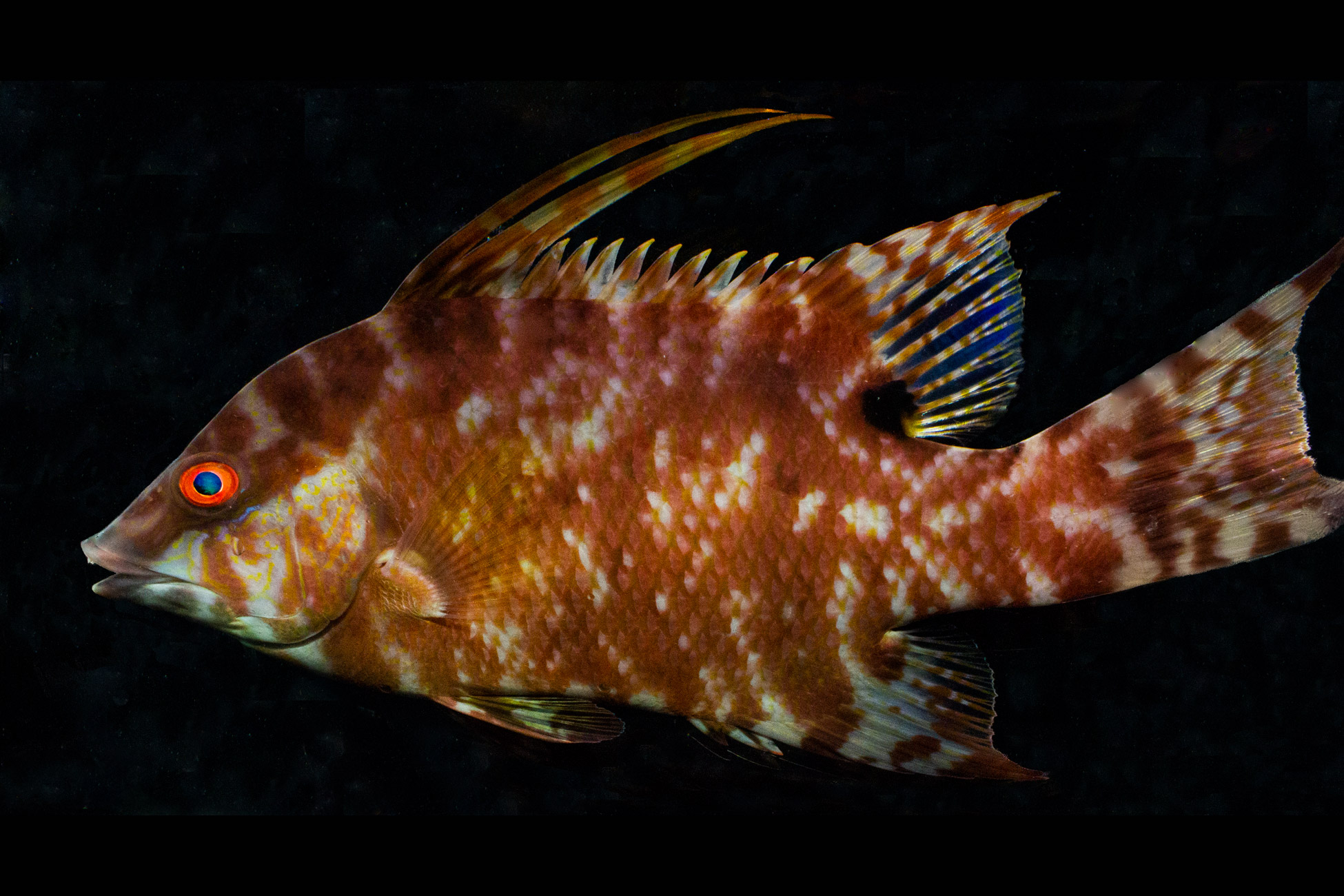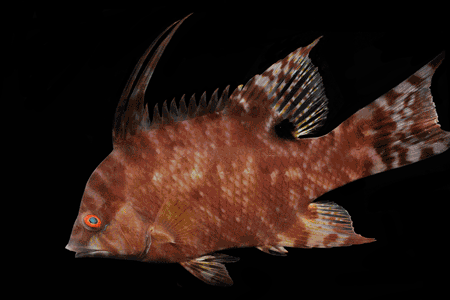UNCW discovery explains how some color-changing fish can monitor their own performance.

A research breakthrough at UNCW and the Center for Marine Science suggests that some color-changing fish species may be able to "see" with their skin. Attracting global media attention within the scientific community, Assistant Professor of Biology and Marine Biology Lorian Schweikert's findings were published in a new paper in Nature Communications on Aug. 22.

The hogfish, a common fish found along the Eastern Seaboard to the coast of Brazil, including the Bahamas, Bermuda, and the Gulf of Mexico, can quickly change color from white to red to mottled brown to protect itself from predators. The study discovered light sensors, hidden beneath color-changing cells in the skin, that work like Polaroid cameras. Essentially, the hogfish takes pictures of itself without using its eyes, or even its brain, to monitor its color-changing performance.
"Our findings are bigger than hogfish because they may explain why other color-changing animals (particularly vertebrates) can detect light with the skin,” said Schweikert. “It also suggests the existence of specialized photoreceptors in the skin of this fish, which would be the first example of such a photoreceptor outside the central nervous system of a vertebrate animal."
For the hogfish, ensuring they are properly camouflaged is paramount to their survival from predators like sharks and barracuda. They are also a common catch for anglers and spear fishers.
“If you had to get dressed in the morning and didn't have a mirror or couldn't bend your neck, how would you know if you dressed correctly? For the fish, this is a life-or-death question that dermal photoreception can answer,” she said.
Furthermore, Schweikert explained that studying systems like this in fish can provide critical information that translates to practical applications for humans.
"This is an example of a feedback system, where the body monitors itself to ensure performance. Feedback systems are important in biology and technology. From studying examples of these systems, we can draw principles about how to develop smart systems that require real-time information about the precision of performance, such smart robots or self-driving cars."
Co-authors and affiliate institutions for this study included researchers from the Air Force Research Laboratory, Duke University and Florida International University. Two UNCW students, doctoral candidate Lydia Naughton and undergraduate Jacob Bolin are co-authors. UNCW's RMD Bioimaging Facility was critical to the success of this work.
This article has the following tags: CSE - College of Science & Engineering Research & Innovation


